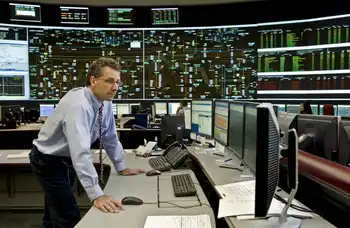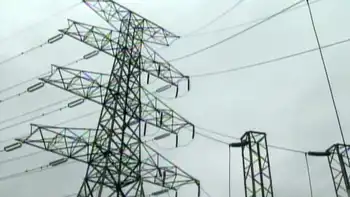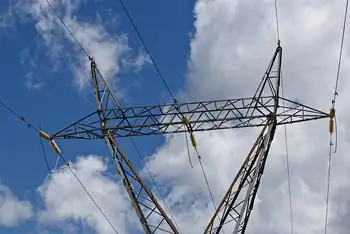Incentives make the turbines go round
NORTH DAKOTA - There has been plenty of buzz surrounding North Dakota's wind energy industry recently. The Public Service Commission held a public hearing at the Cavalier County Courthouse regarding a $225 million, 159-megawatt wind farm near Langdon, N.D. The PSC discussed the siting of 106 wind turbines and associated facilities with local residents as plans for the project move forward.
West Fargo-based DMI Industries announced plans to acquire a wind tower manufacturing facility in Oklahoma. The new plant will give DMI one of the largest tower fabrication capacities in North America. Earlier this year, LM Glasfiber held a job fair with the intent of increasing its local work force to about 800. The company, which manufactures wind turbine blades, employed about 300 Grand Forks workers less than a year ago. Yet, despite this recent success, the American Wind Energy Association ranked North Dakota 14th in installed wind energy capacity at the close of 2006. Texas topped the list with 2,678 megawatts of installed production capacity.
Minnesota was fourth wit 895 megawatts. North Dakota's capacity was 178 megawatts. The 159-megawatt Langdon wind farm project will certainly help North Dakota move up the list, and Gov. John Hoeven is upbeat about future projects. "This will be the largest wind project in North Dakota so far," he said in Grand Forks when officials from Minnkota Power Cooperative, Otter Tail Power Co. and Florida-based FPL Energy announced their plans for Langdon. But even with the Langdon project, North Dakota still has a long way to go to catch up to Texas and live up to its potential as the state with the nation's greatest wind energy potential a potential to produce 138,400 megawatts of power.
Both federal and state government officials know this, and are strong proponents of incentives for future wind energy development. "We want to be ground zero for wind power in North Dakota," said Rep. Earl Pomeroy, D-N.D. Incentives At the federal level, North Dakota's congressional delegation is advocating the extension of a production tax credit that was originally established in 1992 and is set to expire again on Dec. 31, 2008.
The credit has expired three times already. Sen. Kent Conrad, D-N.D., who has proposed a five-year extension in his BOLD Energy Act, said wind energy development is strongly tied to the tax credit.
When the credit has been allowed to expire, he said, there is a marked change in the installation o new wind turbines. "There's a very clear relationship and the reason is clear," he said. "You need that production tax credit to be competitive with other energy sources." Pomeroy and Sen. Byron Dorgan, D-N.D., also support renewing the tax credit. Dorgan supports a 10-year extension of the credit, which would put it in place through 2018. "That tells investors and tells the country, 'This is where we're headed,'" he said. Pomeroy agreed, saying the expansion of the credit offers companies long-term security with their investments.
"These systems really depend on that production tax credit to continue to grow," he said. At the state level, Hoeven said the key is not only to develop incentives for development, but also develop strong relationships with companies in the wind energy industry.
"Really, what I'm talking about is the kind of relationship when they know they an deal with the regulatory environment," he said. In the case of FPL Energy, those relationships appear to be working. FPL senior vice president Michael O'Sullivan said his company will have invested more than $500 million in North Dakota wind energy development once the Langdon project is completed.
According to Tax Commissioner Cory Fong, North Dakota currently offers three main incentives for wind energy development. Those are a five-year, 3 percent income tax credit, a sales tax exemption for materials used in the construction of a wind power generation facility and a property tax reduction. Legislation passed in Bismarck this year has made some of those incentives more appealing, Fong said. For example, House Bill 1317 extended a property tax deduction for wind generation units with a capacity of 100 kilowatts or more from 3 percent to 1.5 percent. House Bill 1233 allows companies to sell up to $3 million of unused credits to customers that are buying power from a geothermal, solar or wind energy device or to any taxpayer that constructs or expands an electricity transmission line after Aug.
1. "It's new to us. This is the first year we've been faced with the concept of selling tax credits," Fong said. Gridlock But tax incentives are only part of the picture. Transmission lines also need to be upgraded before North Dakota can export wind-generated electricity to other areas of the country on a larger scale. "Right now, we have a tough time getting additional power to the Chicago market," Conrad said. He added that companies have told him they are willing to invest hundreds of millions of dollars in North Dakota if the production tax credit is extended and the state is able to solve its transmission problems.
"We have lagged behind where we might otherwise have been because of this transmission gridlock," Conrad said. Hoeven said North Dakota exports about 60 percent of the energy produced here. In order to address the transmission problem, Hoeven said the 2005 Legislature created a state transmission authority, which has the power to issue bonds to pay for upgrades to transmission lines and equipment. "Transmission is our bottleneck," Hoeven said. "So that's why we put our transmission authority in place during the last session." Standards? Dorgan, who is working on a federal renewable portfolio standard that includes a 15 percent standard for electricity, said North Dakota currently has goals for wind energy development, but he feels the state is holding itself back by not adopting standads.
"I think that's a mistake for our state. I think our state should be more aggressive," he said. "I think our state should have its own renewable portfolio standard." Conrad also supports standards at both the federal and state levels. He said 23 states and the District of Columbia have set renewable energy standards. His BOLD Energy Act would establish a 10 percent federal renewable portfolio standard by 2020 and a 0 billion-gallon renewable fuel standard by 2025. When it comes to standards, Hoeven said the issue is something that's best addressed at the national level. Because North Dakota is a net exporter of energy, he said, a state standard would have minimal impact on North Dakota's renewable energy industry.
"We already exceed our demand in terms of the energy we produce," he said.
Related News

Ontario's electricity operator kept quiet about phantom demand that cost customers millions
TORONTO - For almost a year, the operator of Ontario’s electricity system erroneously counted enough phantom demand to power a small city, causing prices to spike and hundreds of millions of dollars in extra charges to consumers, according to the provincial energy regulator.
The Independent Electricity System Operator (IESO) also failed to tell anyone about the error once it noticed and fixed it.
The error likely added between $450 million and $560 million to hourly rates and other charges before it was fixed in April 2017, according to a report released this month by the Ontario Energy Board’s Market Surveillance Panel.
It did…




